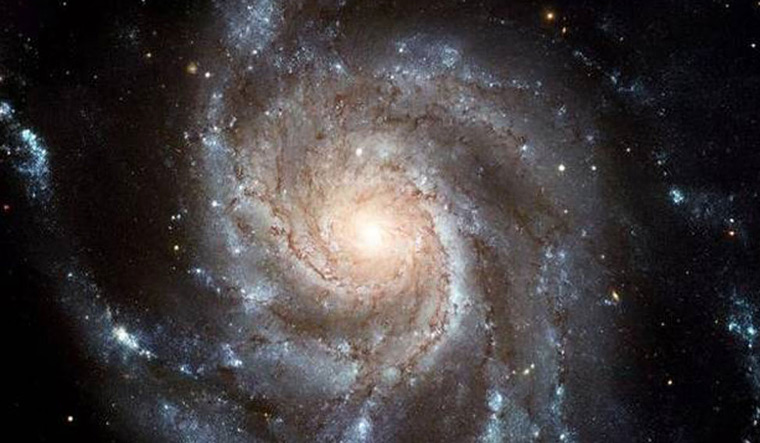A spectacular star system wrapped in an elegant spiral dust cloud, and is believed to contain a star that is spinning extremely fast has been discovered. Scientists believe it could produce one of the most powerful explosions in the universe.
The details of the binary star system, containing a pair of massive ‘Wolf-Rayet’ stars, that has been discovered by an international team of researchers were published in Nature Astronomy.
Wolf-Rayet stars are amongst the hottest stars in the universe. They blast out powerful winds of hot gas, and represent the last stage in the evolution of the most massive stars prior to exploding as a supernova.
Located around 8,000 light years away―half a billion times farther than our sun―the binary system is surrounded by a gigantic dust cloud. The collision between the winds of the two stars can form dust, which takes on elegant spiral pinwheel shapes as the stars orbit each other.
Using the Very Large Telescope (VLT) in Chile and the Anglo-Australian Telescope (AAT) in Australia, the team has found that the star system is producing incredibly fast winds, 100,000 times quicker than a hurricane on Earth. This wind speed is routine for Wolf-Rayet stars. However, the dust cloud is moving much slower.
The differing speeds of wind and dust suggest that the Wolf-Rayet stars are spewing out faster gas at the poles and slower gas at the equator, according to the study which was led by Dr Joseph Callingham from the Netherlands Institute for Radio Astronomy.
Apart from Dr Joseph Callingham, the team consisted of Dr Benjamin Pope from New York University, Prof Paul Crowther from Sheffield University, Prof Peter Tuthill from the University of Sydney, Dr P. Williams from the University of Edinburgh, M. Edwards and Dr B. Norris from the University of Sydney and Dr L. Kedziora-Chudczer from the University of New South Wales.
Dr Benjamin Pope said, “One way for such different winds to happen is via critical rotation.” Critical rotation is needed in most supernova models for a star’s fiery death to be accompanied by the most energetic explosion in the universe: a gamma-ray burst.
“It remains a mystery how dust―similar to soot from a candle―forms in such harsh environments, but this newly discovered system is the most beautiful case seen to date,” added Prof Paul Crowther.


